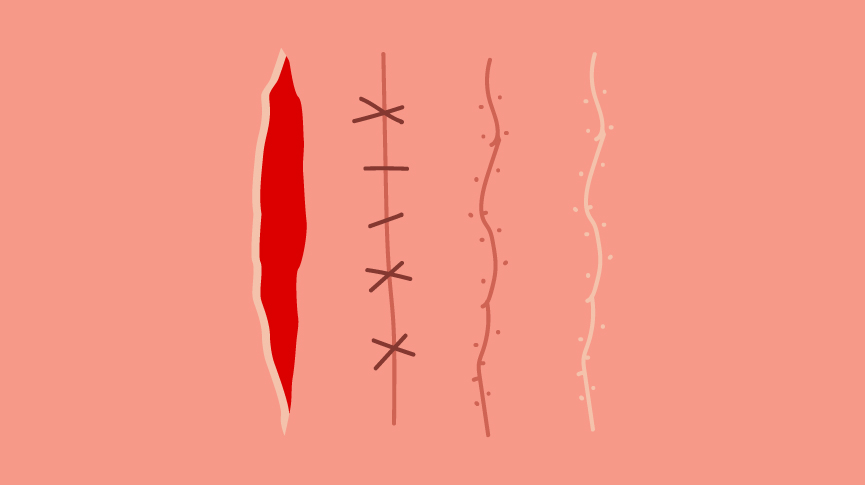What is Scar Tissue? Does it contribute to pelvic pain? How is it treated through Physical Therapy?

If you have had recent surgery, including a pelvic surgery such as a C-section, or hysterectomy or you recently had a vaginal delivery and had perineal tearing you will probably understand the following information even better than me.
Any trauma, be it accidental or intentional, that causes a disruption in the continuity of your skin leads to the formation of scar tissue. It poorly mimics the skin, so even though the continuity is restored, it is not as elastic and strong as our normal skin.
Scars – products of trauma
Scar tissue is like a necessary evil. In order to heal, the body lays down collagen and tissue as part of the rebuilding process. As a result, a scar is formed. The deeper the trauma, the more complex or bigger a scar may be. This can cause a person to experience pain. A person may also experience decreased mobility if a scar limits range of motion.
When a C-section or other pelvic surgery is carried out, it requires a cut through many layers of skin, muscle, connective tissue, along with the surface of the organ. In this disruption and re-connection, the body is able to heal but the new tissue is thicker and more fibrotic than before.
Scars may not result in pain and typically in the early healing process, a scar will not be problematic. But as the nerves in the area start to “wake up” a person may experience pain in the area of the scar. Nerves like to be able to glide and slide, and scar tissue can limit a nerves ability to do that, which can lead to pain.
Furthermore, scar tissue is meant to be tight and inelastic to hold things in place, as a result, the pressure may result in restricted blood flow in the area, which means restricted oxygen supply to healthy cells, hence, pain. Finally, the restrictive nature of scar tissue can impair the ability of joints to move properly.
What therapy to use?
If a person recently had surgery and are concerned about their scar they should consult their physician. They may recommend physical therapy as a treatment option for addressing scar tissue.
A physical therapist may perform scar tissue mobilization. During this intervention, the tissue is moved around in such a technique where the tissue is lengthened and limits the scar’s ability to adhere to multiple layers of tissue. Movement of the tissues enhances blood flow to the area, resulting in steady recovery. Scar tissue mobilization also improves the range of motion has a positive effect on mobility as well. A PT may teach a person how to perform a scar massage at home.
Bottom line: Although scars are part of the healing process, they may require additional support to get them moving better.

A collective group of “lady experts” at Intimina who love sharing our personal experiences, even when they are a little too personal. We believe it’s time to start breaking down the taboos around menstruation, motherhood, and menopause, and start owning our female health.


